
|
 |
Sir Frank Whittle |
 |
 |
 |
 |
 |
|---|---|---|---|---|---|---|---|
 |
 |
 |
 |
 |
|||
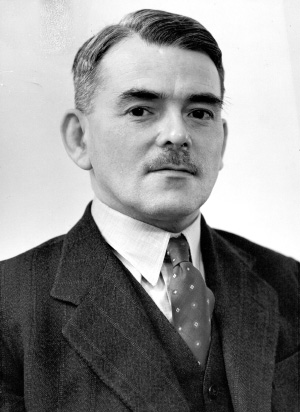 |
||
|
Commodore Sir Frank Whittle, OM, KBE, CB, FRS, Hon FRAeS (June 1, 1907 – August 9, 1996) was a British Royal Air Force (RAF) officer. While he is often hailed as a father of jet propulsion, he shares credit with Germany's Dr. Hans von Ohain for inventing the jet engine independently of each other.
From an early age Whittle demonstrated an aptitude for engineering and an interest in flying. Determined to be a pilot, he overcame his physical limitations to be accepted into the RAF where his abilities earned him a place on the officer training course at Cranwell. He excelled in his studies and became an accomplished pilot. While writing his thesis, he formulated the fundamental concepts that led to the creation of the jet engine, taking out a patent on his design in 1930. (A similar patent was submitted by Maxime Guillaume in 1921, but was technologically not feasible at the time.) Whittle's performance on an officers' engineering course bought him a place on a further course at the University of Cambridge where he graduated with honors. Without Air Ministry support, he and two retired RAF servicemen formed Power Jets Ltd to build his engine with assistance from the firm of British Thomson-Houston. Despite limited funding, a prototype was created and operated in 1937. Official interest was forthcoming following this success with contracts being placed to develop further engines, but the continuing stress seriously affected Whittle's health, eventually resulting in a nervous breakdown in 1940. In 1944 when Power Jets was nationalized, he again suffered a nervous breakdown and resigned from the board in 1946. In 1948 Whittle retired from the RAF and received a knighthood. He joined BOAC as a technical advisor before working as an engineering specialist in one of Shell Oil's subsidiaries followed by a position with Bristol Aero Engines. After emigrating to the USA in 1976 he accepted the position of NAVAIR Research Professor at the United States Naval Academy from 1977–1979. In August 1996, Whittle died of lung cancer at his home in Columbia, Maryland.
 1930 Whittle patent. Whittle’s original 1930 patent called for a “straight-through” configuration, to the combustion chambers, originating from a centrifugal compressor. However, Whittle was concerned that a long drive shaft could create a whiplash condition, so a redesign resulted in a “reverse-flow” configuration. The new design resulted in the successful W.1 engine where the air from a double-side centrifugal compressor “folded-back” through ten combustion chambers and exited past a single-stage turbine wheel, resulting in a short driveshaft.
 Whittle W.1 engine.
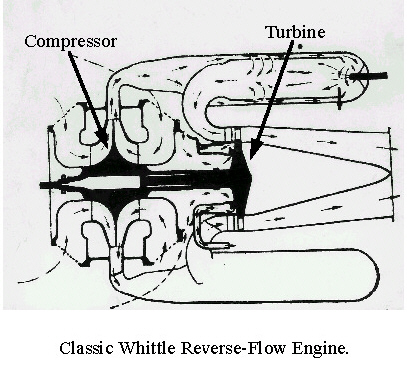 Following the first test flight of the Gloster E.28/39 (W4041/G) on May 15, 1941, a Whittle W.1X turbojet was shipped to the United States in September 1941 and copied by General Electric and produced as the Model I Supercharger and later as the General Electric I16/J31-GE. The J-31 powered the Bell XP-59A Airacomet on its maiden flight on October 1, 1942. The J-31 also provided boost power on the Ryan FR-1 Fireball composite-power fighter, which had a piston engine on the nose. The J-31 produced 1,600 lb. thrust. The W.1X turbojet also powered the Gloster F.9/40 Meteor Prototype (DG202) on its maiden flight on June 24, 1943.
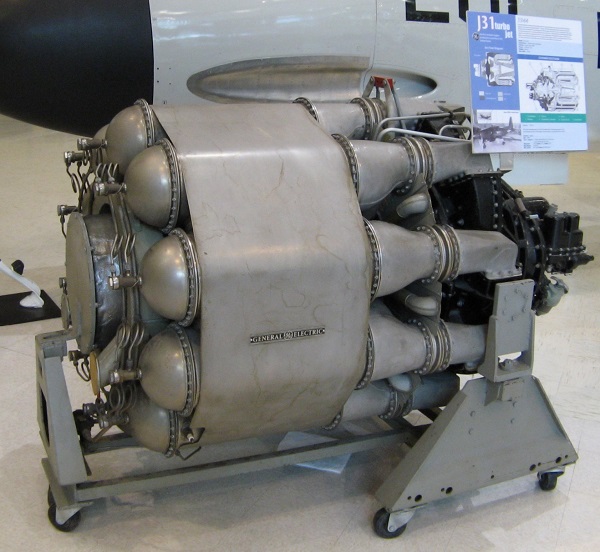 General Electric J31 engine. The Rover Company was assigned to produce the 1,600 lb. W2B production engine, but they could not meet planned production quotas and production was transferred to Rolls-Royce in 1943. Rolls-Royce produced 167 W2B/23 Wellands which powered the Gloster Meteor I and some early Mk.IIIs. Meanwhile at Rover, Adrian Lombard had redesigned Whittle’s “reverse-flow” engine into a “straight-through” configuration as the W2B/26. This engine had a double-sided centrifugal compressor, followed by ten combustion chambers which allow exhaust gases to converge and exit past a single-stage turbine wheel. A third bearing was added to the longer drive shaft to compensate for thermal expansion. This modification ended the relationship between Power Jets and Rover. |
|
 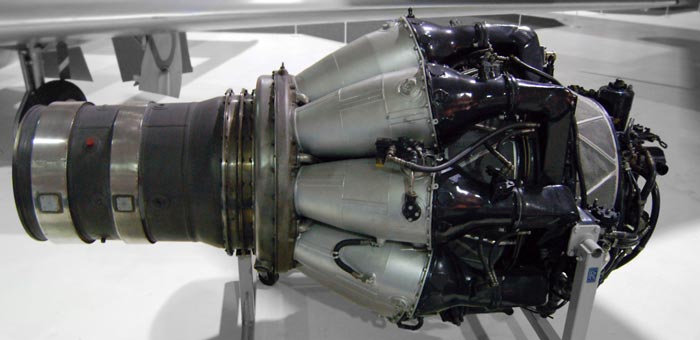 Rolls-Royce Derwent engine. |
|
After Rolls-Royce took over production of the Welland, they acquired five W2B/26 engines which they developed into the Derwent I, which led to the Derwent IV , Nene and Tay RB.44 engines. Rolls-Royce produced 500 Derwent 1s with 2,000 lb. thrust for the Meteor III. The Derwent II was adapted to incorporate a gear reduction box with an offset shaft to dive a 7 ft. 6 in. propeller, making it the first turboprop engine. It was first flown on Meteor EE227 on September 20, 1945. This led to the development of the Rolls-Royce Dart turboprop which was flight tested on a Wellington Mk.10 (LN715) in October 1947.
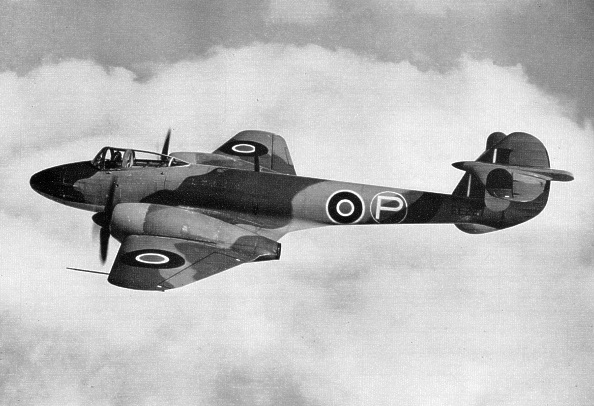 |
Airmen Index
©Larry Dwyer. The Aviation History Online Museum.
All rights reserved.
Created November 8, 2009. Updated January 3, 2023.